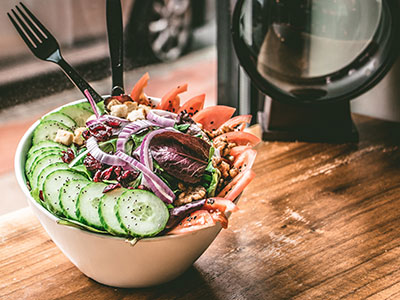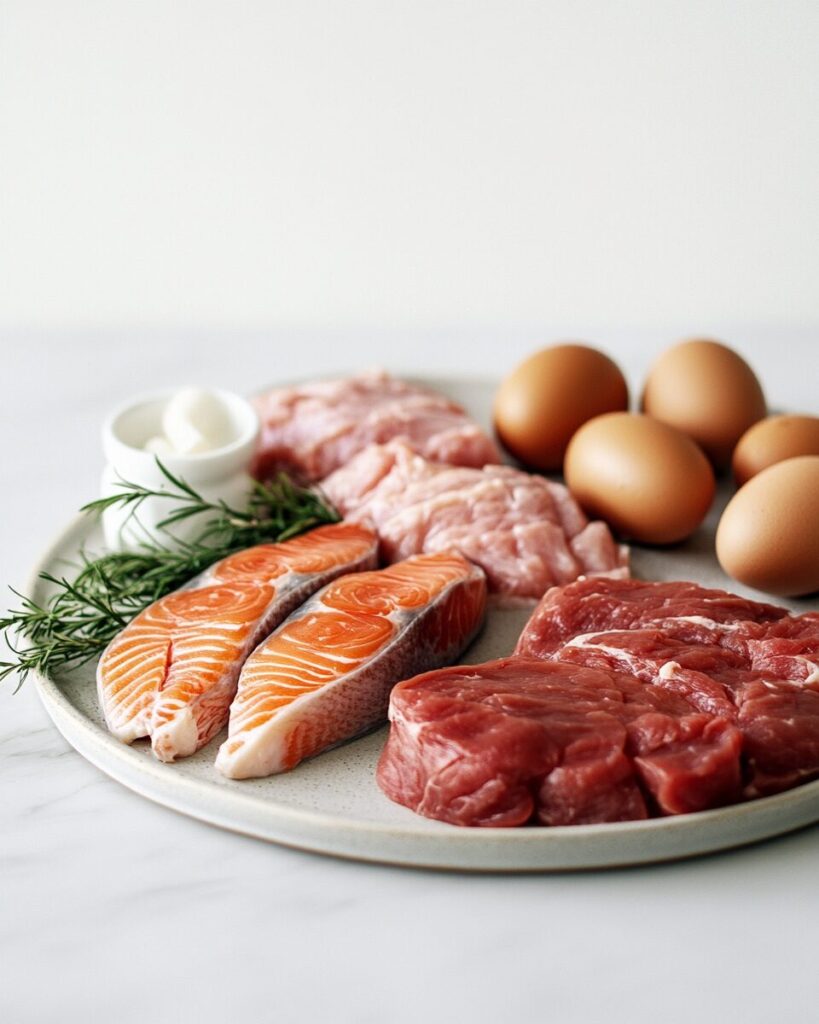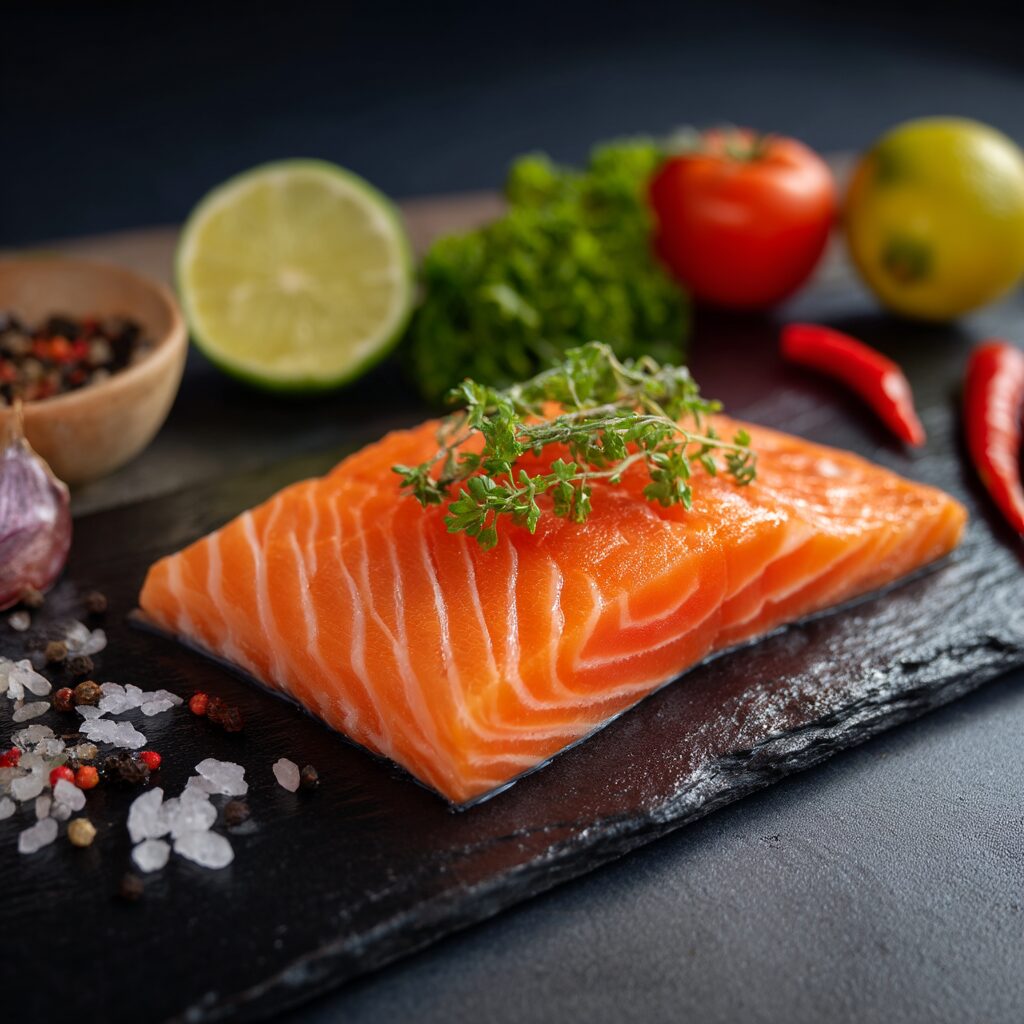The Mediterranean diet is less of a diet and more of a lifestyle. Unlike many other trendy eating patterns, the Mediterranean diet is meant to be easily customizable and can work with various cuisines and preferences. Rather than a strict meal plan, it’s a way of eating that emphasizes enjoying whole foods and regular physical activity.
Here, we give you a blueprint to follow the Mediterranean diet along with tips to make small, sustainable changes to what you’re already eating to help it better align with your goals.
What is the Mediterranean diet?
The Mediterranean diet is a way of eating inspired by the traditional foods of countries bordering the Mediterranean Sea, such as Greece, Italy, and Spain. It emphasizes whole, plant-based foods like fruits, vegetables, nuts, legumes, and whole grains, while incorporating healthy fats from sources like olive oil and avocados.
This diet also includes moderate amounts of fish and poultry, while limiting red meat and processed foods. It’s widely praised for its health benefits, including reducing the risk of heart disease, diabetes, and certain cancers. Unlike restrictive diets, the Mediterranean diet is more of a lifestyle, focusing on balance and enjoyment rather than strict rules.
This diet promotes an increase in the consumption of:
- Fruits and vegetables
- Whole grains
- Legumes
- Nuts and seeds
- Healthy fats, such as olive oil
Conversely, it encourages limiting:
- Processed foods
- Added sugars
- Refined grains
- Alcohol intake
Research has linked the Mediterranean diet to several health benefits, including supporting weight loss, lowering the risk of heart attacks, strokes, and type 2 diabetes, as well as reducing the likelihood of premature death. Due to these advantages, it is considered an excellent option for improving overall health and preventing chronic diseases.

Foods to Eat
The Mediterranean diet includes a variety of nutrient-rich foods that promote overall health. Here’s a list of foods to focus on:
Healthy Fats
- Extra virgin olive oil
- Olives
- Avocados
- Nuts (almonds, walnuts, pistachios)
- Seeds (chia, flax, sunflower)
Vegetables
- Leafy greens (spinach, kale, arugula)
- Tomatoes
- Bell peppers
- Zucchini
- Eggplant
- Artichokes
- Broccoli
- Carrots
Fruits
- Berries (strawberries, blueberries, raspberries)
- Citrus fruits (oranges, lemons, grapefruits)
- Apples
- Grapes
- Figs
- Pomegranates
Whole Grains
- Whole wheat bread and pasta
- Brown rice
- Quinoa
- Barley
- Oats
Legumes & Beans
- Chickpeas
- Lentils
- Black beans
- Kidney beans
Protein Sources
- Fatty fish (salmon, sardines, mackerel)
- Lean poultry (chicken, turkey)
- Eggs
- Greek yogurt
- Cheese (feta, ricotta, Parmesan)
Herbs & Spices
- Basil
- Oregano
- Rosemary
- Thyme
- Garlic
- Cinnamon
Beverages
- Water
- Herbal teas
- Red wine (in moderation)
This diet focuses on fresh, whole foods while minimizing processed items.
Foods to Limit
Processed & Red Meats
- Hot dogs
- Bacon
- Sausages
- Deli meats
Highly Processed Foods
- Frozen meals with high sodium
- Packaged snacks with artificial additives
- Fast food
Refined Grains
- White bread
- White pasta
- Products made with white flour
Sugary Foods & Beverages
- Sodas
- Candy
- Sugary desserts
Unhealthy Fats
- Butter
- Hydrogenated oils (vegetable oil, soybean oil, canola oil)
Alcohol
- Limit alcohol intake (except for moderate red wine consumption)
By focusing on whole, minimally processed foods, the Mediterranean diet supports heart health and overall well-being.

How to Get Started With the Mediterranean Diet
Getting started with the Mediterranean diet is easier than you might think! Here are some simple steps to help you transition:
1. Focus on Whole, Fresh Foods
- Incorporate more fruits, vegetables, whole grains, legumes, nuts, and seeds into your meals.
- Choose healthy fats like extra virgin olive oil and avocados.
- Opt for lean proteins such as fish, poultry, and plant-based sources.
2. Swap Processed Foods for Natural Alternatives
- Replace refined grains (white bread, pasta) with whole grains (brown rice, quinoa, whole wheat bread).
- Cut back on processed foods and added sugars.
3. Cook with Olive Oil
- Use olive oil instead of butter or margarine for cooking and dressing salads.
4. Eat More Seafood
- Aim for two servings of fish per week, such as salmon, sardines, or mackerel.
5. Enjoy Plant-Based Meals
- Try one meatless meal per week, focusing on beans, lentils, and vegetables.
6. Stay Hydrated
- Drink water as your main beverage.
- Enjoy herbal teas and moderate red wine consumption if desired.
7. Make Mealtime Social
- Share meals with family and friends to embrace the Mediterranean lifestyle.
Mediterranean Diet Pantry List
Fruits & Vegetables
Choose a variety of colors and shop in season for optimal nutrients. Frozen and canned options are also great for cost-effectiveness and long-term storage—just make sure they have minimal to no added sodium, sugar, or fat.
Sample list:
- Berries
- Apples
- Bananas
- Oranges
- Pears
- Clementines
- Cherries
- Grapes
- Avocado
- Apricots
- Figs
- Dates
- Tomatoes
- Potatoes
- Artichokes
- Leafy greens (kale, spinach, collards, arugula)
- Cabbage
- Brussels sprouts
- Beets
- Onions
- Zucchini
- Peppers
- Peas
Whole Grains
Mix and match whole grains for quick and easy sides, grain bowl bases, or simple stir-fries.
- Whole-grain bread
- Corn
- Oats
- Brown rice
- Bulgur
- Buckwheat
- Farro
- Barley
- Whole wheat couscous
- Wheat berries
Fish
Fish is a cornerstone of the Mediterranean diet. Aim to eat more fish than other animal proteins. Canned and frozen options last longer than fresh while offering the same nutritional benefits.
- Salmon
- Tuna
- Mackerel
- Herring
- Sardines
- Other seafood as desired
Meat & Poultry
These protein-rich, lean meats are welcome in the Mediterranean diet but should be eaten in moderation. Pair them with whole grains and vegetables for balanced meals.
- Chicken
- Turkey
- Pork
- Beef
- Lamb (a few times per month or less)
Dairy
Dairy is welcome in moderation within the Mediterranean diet.
- Unprocessed cheeses (feta, Brie, cotija, Swiss, halloumi, ricotta, manchego, Cheddar, Parmesan)
- Plain yogurt and Greek yogurt
- Plain kefir
Nuts, Seeds & Legumes
A variety of nuts, seeds, and legumes make excellent snacks, salad toppers, and meal additions.
- Chickpeas
- Black beans
- Kidney beans
- Pinto beans
- Lentils (all types)
- Fava beans
- Walnuts
- Almonds
- Hazelnuts
- Cashews
- Pine nuts
- Sesame seeds
Herbs & Spices
Rather than relying on salt, use a variety of herbs and spices to enhance your meals. Fresh herbs are delicious, but dried herbs work too—just use less, as they tend to be more potent.
- Parsley
- Cilantro
- Ginger
- Garlic
- Mint
- Thyme
- Dill
- Sage
- Rosemary
- Tarragon
- Basil
- Oregano
Other Mediterranean Diet Staples
- Plant-based oils (extra virgin olive oil, canola oil, avocado oil, peanut oil, sesame oil)
- Eggs
- Red wine (in moderation)
Would you like some meal ideas based on these pantry staples? 😊
Sample Menu
Below is a sample menu for 1 week of meals on the Mediterranean diet.
Feel free to adjust the portions and food choices based on your own needs and preferences, and add snacks as desired.
Monday
- Breakfast: Greek yogurt with strawberries and oats
- Lunch: Grilled salmon with quinoa and roasted vegetables
- Dinner: Mediterranean chickpea salad with feta and olives
Tuesday
- Breakfast: Oatmeal with raisins and walnuts
- Lunch: Whole wheat pita with hummus, cucumber, and tomato
- Dinner: Grilled chicken with brown rice and steamed greens
Wednesday
- Breakfast: Omelet with spinach, tomatoes, and onions
- Lunch: Lentil soup with whole grain bread
- Dinner: Baked cod with roasted potatoes and a side salad
Thursday
- Breakfast: Yogurt with sliced fruits and almonds
- Lunch: Mediterranean grain bowl with farro, chickpeas, and roasted peppers
- Dinner: Shrimp sautéed in olive oil with garlic and zucchini
Friday
- Breakfast: Scrambled eggs with vegetables, served with whole grain toast
- Lunch: Greek salad with olives, feta, and grilled chicken
- Dinner: Stuffed bell peppers with quinoa and black beans
Saturday
- Breakfast: Oatmeal with raisins, nuts, and an apple
- Lunch: Whole wheat pasta with tomato sauce and basil
- Dinner: Grilled lamb with roasted sweet potatoes and a side of greens
Sunday
- Breakfast: Omelet with veggies and olives
- Lunch: Mediterranean-style tuna salad with whole grain crackers
- Dinner: Baked eggplant with chickpeas and tahini dressing
This meal plan incorporates healthy fats, lean proteins, whole grains, and plenty of vegetables, making it a balanced and flavorfulapproach to eating.
Healthy snacks
Fresh & Simple Snacks
- Hummus with veggies (carrots, cucumbers, bell peppers)
- Greek yogurt with honey and walnuts
- Olives and feta cheese
- Sliced apples with almond butter
- Avocado toast on whole-grain bread
- Hard-boiled eggs with a sprinkle of paprika
- Fresh fruit (berries, oranges, figs, grapes)
Savory Snacks
- Whole grain crackers with hummus or tzatziki
- Stuffed grape leaves (dolmas)
- Roasted chickpeas with olive oil and spices
- Mediterranean-style tuna salad with olives and tomatoes
- Cucumber slices topped with Greek yogurt and herbs
Nut & Seed-Based Snacks
- Mixed nuts (almonds, walnuts, pistachios)
- Chia pudding with fruit
- Sesame seed bars (pasteli)
- Sunflower seeds or pumpkin seeds
Protein-Packed Snacks
- Grilled shrimp with lemon and olive oil
- Smoked salmon on whole-grain toast
- Lentil salad with olive oil and herbs
- Mini falafel bites with tahini sauce
These snacks are packed with healthy fats, fiber, and protein, making them satisfying and nourishing.
Final Thoughts
The Mediterranean diet is more than just a way of eating—it’s a lifestyle that emphasizes fresh, whole foods, balanced meals, and mindful choices. By focusing on nutrient-rich ingredients like vegetables, fruits, whole grains, healthy fats, and lean proteins, this approach supports long-term health, heart wellness, and overall well-being.
One of the most beautiful aspects of the Mediterranean diet is its flexibility and enjoyment—it’s not about restriction but rather embracing flavorful, nourishing meals. Whether you start small by incorporating more plant-based meals or fully transition to this way of eating, the key is to enjoy the process.
